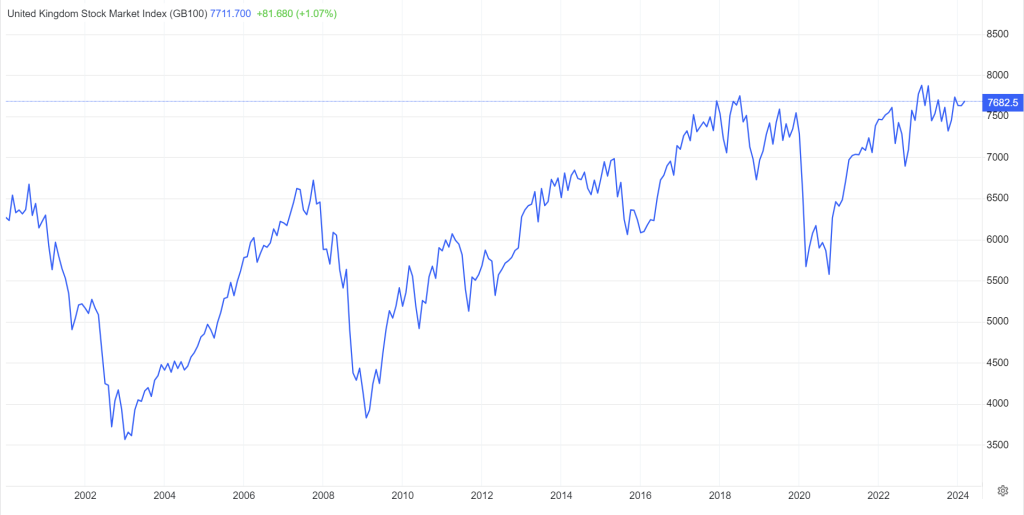Practical men who believe themselves to be quite exempt from any intellectual influence, are usually the slaves of some defunct economist
JM Keynes
Standard economic and business school theory states that higher risk investments give opportunity for higher returns. The pioneering work in this field took place in the 1960s and 70s with Sharpe, Markowitz, and Miller being awarded a Nobel prize for their wok in this field in 1990. At the core of this important set of ideas was the assumption that to generate better returns, a higher level of risk would need to be taken. Most importantly, risk in these theories is defined as the historic volatility of the asset in question. In reality, there can be a dramatic difference between real world risk and measured volatility.
First, a real-world example. During the 1990s the collapse of various Asian currencies became known as the Asian crisis (1997-8). The first currency to undergo a dramatic devaluation was the Thai Baht (฿). Like many of the Asian currencies at the time the Thai Baht was pegged to the US dollar. This meant that the historic measured volatility of the Thai Baht versus the dollar was almost non-existent. As ฿/US$ options were priced using the models that were pioneered in the 60s and 70s, the super low volatility made it very cheap to buy Thai Baht put options. When the devaluation happened, the Thai Baht fell very quickly, by more than 50% (from ฿25 to ฿52 to the US$ in an almost straight line).
This is a clear example of how wrong asset price models can be. Ironically, in the real world of economics, before the devaluation the Thai Baht, while low in volatility, was full of risk (the country was running a current account deficit of around 9% of GDP). After the devaluation, the current account balance of Thailand rapidly improved as imports became expensive and exports very competitive. It was now, on any basic economic analysis, a much less risky exchange rate then before the devaluation – but it had now experienced a patch of very high volatility. To financial modellers, this now meant that it was riskier than it had been before.
This is clearly a misguided conclusion and gets to the heart of the issue with the idea that risk is equivalent to volatility, and that high risk implies high return and vice versa. There is often a dramatic divergence between reality on the ground and what financial markets think and imply. The price and volatility of an asset is not an especially useful predictor of how things turn out, but this idea informs how IFAs, and pension fund managers assess risk and allocate assets.
Rather than judge asset allocation based on historic volatility it makes more sense to judge an assets attractiveness on its current fundamentals. Using financial theory and historic volatility would tell an investor to buy an asset at the top (when measured volatility is usually low) and to sell it or avoid it after a collapse (when historic volatility would be high). In essence financial market theory is pushing investors to buy high and sell low.
A more common-sense approach is to try and buy low and sell high. To do this it is necessary to look at risk and return differently. Is buying a fashionable asset when it is in a bubble a low-risk strategy? Is buying an asset after a collapse a high-risk strategy? The answer to both questions is no. Large swathes of the investment management industry are very much under the strong influence of an academic idea that is just not that sensible.
It is time to think about risk and return in new ways. The Holy Grail for investors is to produce better returns with lower actual risk, rather than just looking at historic volatility as a measure of risk. Once investors are freed from their intellectual blinkers it is possible to think creatively and sensibly. Financial and economic reality is often a better starting point than the abstractions of financial markets and models.
As an example, if an investor looks at the FTSE 100 index over the last 25 years, it is easy to see that there have been some very major drawdowns.

If an investor had managed to avoid half of each of the major declines (a decline of more than 10%), then the result would have a return of 96% compared to a simple, long-only return of 11%.
This is the fundamental idea behind the new investment management firm, Woodhill Asset Management. The company’s only fund consists of about fifty large capitalisation, liquid, and higher quality UK equities. It chooses companies with strong fundamental characteristics such as low gearing and decent earnings growth. The full value of the equity portfolio is hedged with UK market index futures when actual real-world risk is perceived to be too high. Later the hedge is removed when it makes sense to do so.
And recent numbers seem to suggest that superior returns can be achieved using this approach. The fund has offered above inflation returns in four of the last five years. Indeed, returns last year were a peer group* leading 16% in UK sterling. These returns were generated with exceptionally low drawdowns. Indeed, the portfolio has been fully hedged for around 75% of the time that it has been in operation. Superior returns have been created through a steady process of reducing risk at an individual stock level as well as through hedging. Woodhill assesses risk in terms of the real world, not in terms of historic volatility. This is potentially a radical and significant change in what can be offered to investors. Investors may no longer have to choose between safety and low returns or, greater risk in the hope for higher returns. This is in a quiet way truly disruptive and tremendously useful for investors.
*IA Absolute Return GBP


